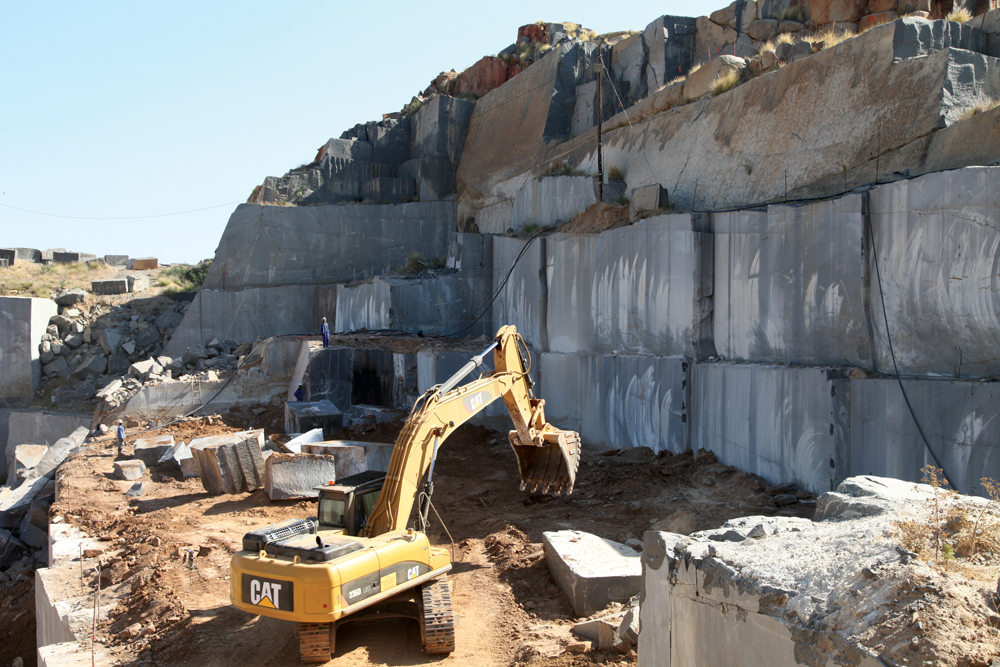Introducing Granite Quarries in South Africa Heritage: A Trip Via Quarries
Introducing Granite Quarries in South Africa Heritage: A Trip Via Quarries
Blog Article
Revealing the Mysteries of Granite Quarrying: Where Toughness and Elegance Meet
The world of granite quarrying is a world where the raw toughness of nature converges with human creativity to develop structures that stand the test of time with an air of sophistication. From the midsts of quarries to the meticulous polishing in workshops, the procedure of changing granite right into architectural marvels is a complicated dancing of practice and innovation. As we peer into the depths of this old craft, we start to reveal the hidden complexities that shape the extremely significance of our constructed setting.
The Beginnings of Granite Quarrying
In the record of architectural history, the origins of granite quarrying are shrouded in a tapestry of ancient craftsmanship and geological marvels. Dating back to ancient Egypt and Mesopotamia, the extraction of granite from quarries marked the beginning of a journey that would ultimately cause the production of several of the globe's most iconic structures.
Granite quarrying's roots can be traced to the knowledgeable artisans who acknowledged the stone's longevity and visual allure. Via a combination of primitive tools and sheer decision, these very early quarry workers discovered granite blocks that would become the foundation of civilizations.
As civilizations advanced, so did the methods of quarrying granite. The Romans, renowned for their design prowess, established innovative techniques for extracting granite to build monoliths, holy places, and roads that stood the examination of time.
The tradition of these ancient quarrying methods proceeds to form modern style, with granite continuing to be a symbol of strength and elegance in building projects around the globe. (granite quarries in south africa)
Devices of the Quarrying Profession
The evolution of granite quarrying methods from ancient people to modern times highlights the vital role played by the devices of the quarrying profession in shaping the market's practices. In ancient times, quarrying devices were rudimentary, typically containing chisels, hammers, and wedges made from materials like bronze or iron. These devices needed considerable manpower and time to essence granite obstructs from quarries.

Additionally, the introduction of pneumatic tools and high-powered machinery has significantly decreased the physical labor needed in quarrying operations, enhancing worker safety and productivity. As the quarrying market remains to innovate, the tools of the profession continue to be at the center of driving progression and forming the future of granite removal.
Drawing Out Blocks of Granite
Using precision machinery and progressed strategies, the removal of granite blocks from quarries has become a sophisticated procedure in the modern-day quarrying sector. The preliminary step involves identifying the area and dimension of the granite deposit to identify the most efficient removal technique. When a suitable website is chosen, the extraction process starts with the boring of holes for the placement of nitroglycerins. Managed blasting techniques are after that utilized to break apart the granite right into view it now workable sections.

Sprucing Up and Completing Techniques
To achieve a perfect surface area on granite blocks, proficient artisans utilize a collection of careful sprucing up and completing strategies. After the initial removal and forming look at here now processes, the granite obstructs undergo a complete polishing phase to boost their natural charm and durability.
In addition to polishing, finishing techniques are applied to additional fine-tune the granite's appearance. By very visit the website carefully picking and using these brightening and completing methods, artisans can transform raw granite blocks into beautiful pieces that showcase both strength and beauty.

Environmental Effect and Sustainability
With the expanding emphasis on environmental consciousness in the sector, granite quarrying techniques are significantly looked at for their influence on all-natural sources and long-lasting sustainability. Additionally, the transport of granite from quarries to processing facilities produces carbon exhausts, even more contributing to environmental destruction.
To minimize these influences and make sure sustainability in granite quarrying, market stakeholders are embracing numerous actions. Applying innovative modern technologies to decrease energy usage and water use, redeeming quarried land for environmental remediation, and promoting accountable sourcing techniques are some approaches being employed. Accreditations such as the Woodland Stewardship Council (FSC) and the Leadership in Energy and Environmental Design (LEED) help customers identify ecologically friendly granite items.
Conclusion
In conclusion, granite quarrying is a process that needs specialized tools and methods to remove blocks of granite and polish them to a high level of finish. While the environmental influence of quarrying can be significant, initiatives are being made to enhance sustainability methods in the market. Overall, granite quarrying is a delicate equilibrium in between taking advantage of the stamina and elegance of this all-natural stone while decreasing its influence on the environment.
Report this page